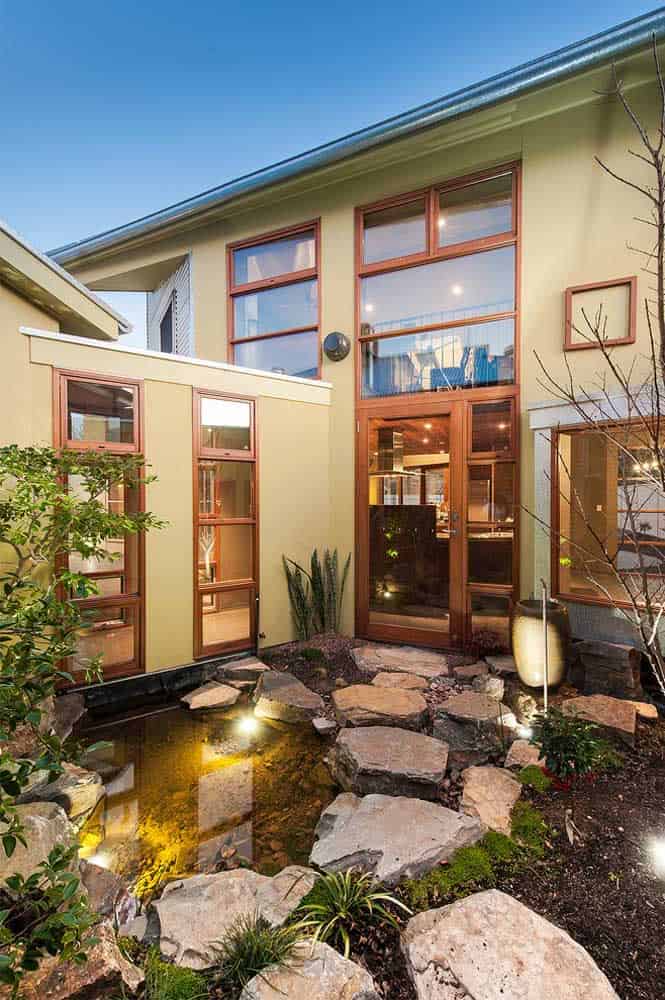Today is the day to get ideas off the paper. And do you know why? This post is all dedicated to him: the garden pond.
We brought you tips, ideas, and a complete walkthrough with everything you need to know to make your garden pond. So let’s roll up your sleeves and start this endeavor?
Garden pond: tips to get the project right

Set a good place
The first step is to define the exact spot where the garden pond will be excavated. This location needs to be leveled to prevent rainwater from causing the lake to tip over or even overflowing it, taking plants and fish away.
It is also important to assess whether there are electrical network points close to the site to ensure correct pump operation. The land on which the pond will be built should preferably be firm to facilitate compaction. Avoid digging the lake in sandy soil.
Another tip: don’t make the lake too close to trees. First, because the leaves from the tree will end up falling into the lake and harming the aquatic life inside. Second, because the roots of some tree species can damage the structure of the lake over time.
What is the ideal shape for the lake?
To keep the garden pond looking like a real pond, its design must be irregular, curved, and organic, as is often the case in nature.
However, square and rectangular formats can be used by those who want to give the lake a more modern appearance that matches the architecture of the house, for example.
Will there be fish?
Not every garden pond needs to have ornamental fish. This depends on everyone’s taste.
But if you choose to farm fish, then it is important to follow some extra recommendations to ensure the survival of the animals. First, the lake walls must not be straight. This can cause fish to jump and escape out. Build ladder-shaped walls with steps or beveled walls.
When choosing fish species, consider the size of the lake. Only place fish of a size proportional to the space and don’t exaggerate the amount of fish. For small lakes, the most recommended fish are guppy, guaru and potbellied. In medium and large lakes it is possible to invest in carp rearing.
Install pump and filters
With or without fish, the artificial lake needs a filter and pump to guarantee the movement and cleanliness of the water.
Better in sun or shade?
Ideally, the garden pond should receive sunlight for at least four hours a day. More than that, aquatic plants can reproduce in excess, unbalancing the ecosystem created in the place.
So, take this factor into account when choosing the location for your garden pond.
What is the minimum depth for a garden pond?
The minimum depth for a garden pond is 70 cm, less than that makes it very difficult to keep the water clean. Not to mention that shallow lakes vary a lot in temperature, harming fish and plants.
Here are garden pond ideas, of all types and sizes, to inspire your project.
1.

2.

3.

4.

5.

6.

7.

8.

9.


